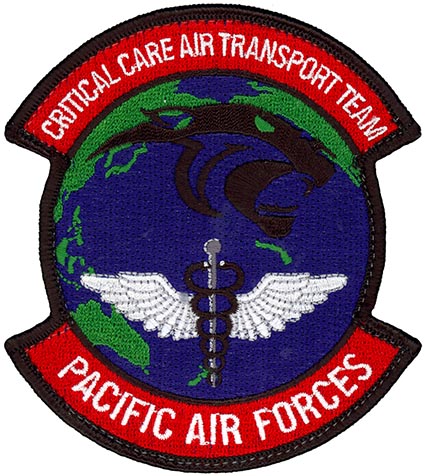Description
Computer made/mounted on velcro 4.0 inch-100mm
PACIFIC AIR FORCES CRITICAL CARE AIR TRANSPORT TEAM
The PACAF CCAT is a limited, rapidly deployable resource with an East element positioned at Tripler Army Medical Center, HI and a West element positioned at the U.S. Naval Hospital, Camp Lester, Okinawa, Japan, to maintain clinical sustainment skills. Together the teams support, on average, more than 30 high-acuity missions per year in the Pacific Theater. CCATT East element will routinely support missions east of the international dateline, while CCATT West element will routinely support missions west of the international dateline.
CCATTs were designed around a war-time model and have traditionally supported contingencies like Operation Enduring Freedom and Operation Iraqi Freedom. What is unique about CCATT East and West is they are designed around a peacetime mission. During peacetime movements, CCATTs transport critically ill beneficiaries of the military health care system, as well as supporting humanitarian assistance missions such as airplane crashes and natural disasters.
CRITICAL CARE AIR TRANSPORT TEAM (CCATT)
The Critical Care Air Transport Team (CCATT) is a unique, highly specialized medical asset that can create and operate a portable intensive care unit (ICU) on board any available transport aircraft during flight. It is a limited, rapidly deployable resource and a primary component of the Air Force’s Aeromedical Evacuation (AE) System. The CCATT team is a three-person medical team consisting of a physician specializing in an area such as critical care, pulmonology, surgery, etc., along with a critical care nurse and a respiratory technician. The team is experienced in the care of critically ill or injured patients with multi- system trauma, shock, burns, respiratory failure, multiple organ failure and other life threatening complications. The complex, critical nature of the patient’s condition requires continuous stabilization, advanced care, life-saving invasive interventions during transport, and life or death decisions.
